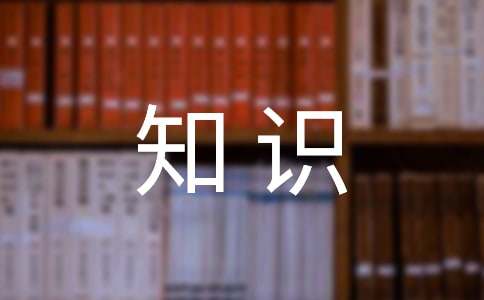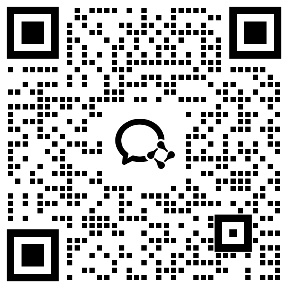初一英语上册知识点总结
- 相关推荐
初一英语上册知识点总结
总结就是把一个时段的学习、工作或其完成情况进行一次全面系统的总结,它是增长才干的一种好办法,为此要我们写一份总结。总结怎么写才不会流于形式呢?下面是小编为大家整理的初一英语上册知识点总结,供大家参考借鉴,希望可以帮助到有需要的朋友。

初一英语上册知识点总结 1
1、名词的复数
(1)、一般的直接加s,如desk(desks) 、pen(pens) 、ruler(rulers)
(2)、以x 、s、ch、sh结尾的加es如box(boxes)、class(classes)、watch(watches)等
(3)、以辅音字母加y结尾的`要变y为i加es,如family ,comedy,documentary等
(4)、以0结尾的名词,有生命的加es如:tomato(tomatoes) 、potato (potatoes );没有生命的加s,如
photo(photos)、piano(pianos)、zero(zeros)
2、名词所有格在名词的后边加’s ,表示后面的名词属于前面的名词所有,如LiLei’s bag Tom’s desk 、her mother’s brother
3、专用名词的大写
如English、Brown 、Rush 、Sunday 、January 、December、 Beijing Opera
初一英语上册知识点总结 2
1、人称代词和物主代词
2、指示代词: this (these) that (those)
3、不定代词some someone
4、疑问代词who what how much how old (疑问副词:when where )
5、反身代词yourself
初一英语上册知识点总结 3
1、基数词one two three four five six seven eight nine ten eleven twelve thirteen fourteen
2、序数词first second third fourth fifth sixth seventh eighth ninth tenth
初一英语上册知识点总结 4
本册所学的形容词不多,注意拼法和反义词
big (small) long (short) sad (happy) boring (interestingfunny ) exciting difficult
relaxing great healthy old (new) successful white (black)
初一英语上册知识点总结 5
1、动词的种类(四类)
系动词如be(is am are);情态动词如can 、may、need;助动词( do does);行为动词如take 、bring、eat、have(has)、like、sell、buy、sale、play、see、find、go、watch、thank、think等
2、动词的第三人称单数(与名词的复数一样)
如eat(eats) take (takes) buy (buys) play (plays) have(has) are (is)
3、动词的时态(一般现在时)
( 1)含有系动词的
I’m a Chinese boy .
She is twelve .
He is Tim’s brother .
Her mother is an English teacher .
含有系动词的句子在变一般疑问句时只将“主语和系动词交换位置”,上面句子变成一般疑问句时分别为
Are you a Chinese boy ?(注意第一人称通常变为第二人称)
Is she twelve ?
Is he Tim’s brother ?
Is her mother an English teacher ?
含有系动词的句子在变否定句时只须“在系动词的后边加上not”,前面的几个了陈述句变否定句分别为
I’m not a Chinese boy.
She isn’t twelve .
He is not Tim’s btother .
Her mother isn’t an English teacher .
(2)含有情态动词的句子( can ),
She can play basketball.
His mother’s cousin can sing many English songs.
含有情态动词的句子在变一般疑问句时只须将“主语和情态动词交换位置”,上面两句变一般疑问句分别为
Can she play basketball ?
Can his mother’s cousin sing many English songs ?
含有情态动词的句子在变否定句时直接在情态动词的后边加上not ,上面两个陈述句变否定句分别为
She can not play basketball .
His mother’s cousin can not sing many English songs .
(3)含有行为动词的句子
We have many friends.
They watch TV at 7 in the evening .
The students take their books to school .
I have lunch at school .
You have a sister .
1含有行为动词的句子在变一般疑问句时要在原句子的前面加do.上面的句子变成一般疑问句分别为
Do you have many friends ?
Do they watch TV at 7 in the evening ?
Do the students take their books to school ?
Do you have lunch at school ?
Do you have a sister ?
2含有行为动词的`句子在变否定句时只须在行为动词前加don’t .上述五个陈述句变否定句分别为
We don’t have many friends.
They don’t watch TV at 7 in the evening .
The students don’t take their books to school .
I don’t have lunch at school .
You don’t have a sister .
3含有行为动词的句子,当主语是第三人称单数时,行为动词要加s (或es)如:
She has a red pen .
He has eggs for breakfast .
Her mother buys a skirt for her .
She likes thrillers .
My brother watches TV every evening .
He wants to go to a movie .
含有行为动词的句子,当主语是第三人称单数时,变一般疑问句要“在原句子的前面加上does ,同时行为动词要还原”。上面的句子变成一般疑问句分别为:
Does she have a red pen ?
Does he have eggs for breakfast ?
Does her mother buy a skirt for her ?
Does she like thrillers ?
Does your brother watch TV every evening ?
Does he want to go to a movie ?
含有行为动词的句子,当主语是第三人称单数时,变否定句时“在行为动词前面加does’nt ,同时原行为动词要还原”。上面的句子变否定句分别为:
She doesn’t have a red pen .
He doesn’t have eggs for breakfast .
Her mother doesn’t buy a skirt for her .
She doesn’t like thrillers .
My brother doesn’t watch TV every evening .
He doesn’t want to go to a movie .
初一英语上册知识点总结 6
本册的介词较少,主要用在介词短语里面,如
on:on sale (销售) on weekends (在周末) on April 8th, (在四月八日) on the desk (在桌子上) on TV (在电视上)
in:in English (用英语) in the afternoon (在下午) in the case (在盒子里)
T-shirt in red (红色T恤) be in the movie(出演这部电影) in September (在九月)
be in our school music festival (参加我们学校的音乐节)
at:call sb.at 3356 (拨打3356找某人) at your school (在你们学校里) at Huaxing Clothes Store (在华兴服装店) at a very good price (以非常优惠的价格) at six (六点钟)
have a look at (看一看)
of:a set of (一串…) the photo of your family (你的全家照) lots of =a lot of (许多)
date of birth(birthday)(生日)
with:with sb. (同某人一起) be good with (和…相处得好) help sb. with sth. (帮助某人做某事)
for:thanks for =thank you for (谢谢某人的`….) bag for sports (运动包) pants for $30 (卖30元的裤子) see for yourself (亲自看看) for girls (对女孩子来说) like sth. for lunch (喜欢吃……当作午餐)
about:about Chinese history (有关中国历史)
under:under the desk (在桌子下面)
初一英语上册知识点总结 7
like一词的。用法
like用作及物动词,译为“喜欢”。
(1)后接名词或代词,表示喜欢某人或某物。如:I like the baby very much.我非常喜欢这个小孩。
(2)后接动名词(v.-ing),表示“喜欢做某事”,着重于习惯、爱好。如:Tom likes playing football.汤姆喜欢踢足球。
(3)后接动词不定式(todo),表示“偶尔地喜欢做某事”,着重于某次具体的行为。如:I like reading,bu tIlike to watch TV thisevening.我喜欢读书,但我今晚想看电视。
句子单数变复数,注意以下五要素
(1)主格人称代词要变成相应的复数主格人称代词,即I→we,you→you,she,he,it→they。如:She is a girl.→The yare girls.(2)am,is要变为are。如:I’mas tudent.→We are students.
(3)不定冠词a,an要去掉。如:He is a boy.→The yare boys.
(4)普通单数名词要变为复数形式。如:It is an apple.→The yare apples.(5)指示代词this,that要变为these,those。如:This is a box.→These are boxes.
英语日期的'表示法
英语中月份和星期名称都是专有名词,它们的首字母必须大写,并且前面无需用冠词。用英语表示日期,其顺序为月+日+年,日和年之间需用逗号隔开。如:August2nd,2003(2003年8月2日)。也可以用日+月+年来表示。如:10thMay,2003(2003年5月10日)英语日期前介词的使用:若指在哪一年或哪一月,则用介词in,若具体到某一天,则需用介词on。
初一英语上册知识点总结 8
一、48个国际音标及26个英文字母的正确书写
要熟练掌握元音和辅音,5个元音字母(a,e,i,o,u),字母的正确占格及单词间距。
二、be动词的用法
be动词有三种变形,分别是:am,is,are。记忆口诀:
“我”用am,“你”用are,is用于“他、她、它”;单数全都用is,复数全部都用are。
三、人称及人称代词的不同形式(主格和宾格)
1、三种人称:第一人称(I,we),第二人称(you,you),第三人称(he,she,it,Maria)。
2、人称代词的主格,即人称代词位于句子主语位置时的形态:I,We,You,You,He,She,It,Maria。
3、人称代词的宾格,即人称代词位于句子宾语位置时的形态:me,us,you,you,him,her,it。
4、形容词性物主代词:my,our,your,your,his,her,its,their。
5、名词性物主代词:mine,ours,yours,yours,his,hers,its,theirs。
6、反身代词:myself,ourselves,yourself,yourselves,himself,herself,itself,themselves。
四、基数词
(表示数量多少的词,大致相当于代数里的自然数)zero,one,two,three,four,five,six,seven,eight,nine,ten,eleven,twelve,thirteen,fourteen,fifteen,sixteen,seventeen,eighteen,nineteen,twenty,twenty—one,twenty—two,twenty—three,twenty—four,twenty—five,twenty—six,twenty—seven,twenty—eight,twenty—nine,thirty,forty,fifty,sixty,seventy,eighty,ninety,one hundred,one hundred and one。
五、一般疑问句及特殊疑问句
1、一般疑问句:能用Yes或No来回答的问句。一般疑问句句尾读升调。
2、特殊疑问句:不能用Yes或No来回答的问句。特殊疑问句句尾读降调。
六、可数名词变复数
可数名词变复数时,有规则变化和不规则变化两种。
1、规则变化:
1)一般情况直接在词尾加“—s ”,如:cake—cakes,bag—bags,day—days,face—faces,orange—oranges等;
2)以s,x,sh,ch结尾的词,要在词尾加“—es ”,如:bus—buses,watch—watches,box—boxes等;
3)以辅音字母加y结尾的词,变y为i再加“—es ”,如:baby—babies,country—countries,family—families等;
4)部分以f(e)结尾的词,变f(e)为“ves ”,如:knife—knives,half—halves等;
5)以o结尾的词,加“—s ”或“—es ”,如:zoo—zoos,photo—photos,tomato—tomatoes,potato—potatoes等。记忆口诀:除了“英雄”hero外,凡是能吃的,加“—es ”,不能吃的加“—s ”。
2、不规则变化:
1)改变单数名词中的元音字母:man—men,woman—women,foot—feet,tooth—teeth等;
2)单、复同形:sheep—sheep,Chinese—Chinese,Japanese—Japanese等;
3)其他形式:mouse—mice,child—children等。
七、简单句的成分及主谓一致原则
最基本构成:主语+谓语+宾语,其中谓语由动词来充当。
主谓一致原则,就是句子的谓语要始终与主语保持数量上的一致性。当主语是第三人称单数(简称“三单”)时,谓语动词也要相应变成单数形式;当主语非“三单”时,谓语动词就用原形。实意动词变“三单”的规则如下:
1)一般动词在词尾加“—s ”,如:like—likes,tell—tells,play—plays等;
2)以字母s,x,ch,sh结尾的.动词加“—es ”,如:guess—guesses,teach—teaches,watch—watches等;
3)以o结尾的动词一般加“—es ”,如:do—does,go—goes等;
4)以辅音字母加y结尾的动词,先变y为i,再加“—而是”,如:fly—flies,carry—carries等;
5)have的三单形式是has。
八、冠词的用法(名词前面必须要有冠词)
冠词分为定冠词(the)和不定冠词(a,an)两种。
1、定冠词the表示“特指”,可译为“这个”、“那个”、“这些”、“那些”。
2、不定冠词a,an用来表明(可数)名词的数量是“一个”。an用于以元音开头(注意不是以元音字母开头)的单词前,a则英语非元音开头的单词前。
3、不定冠词a,an与基数词one的区别是:不定冠词不是刻意强调“数量”,而基数词则强调“数量”。
九、助动词(do,does)的用法
只有实意动词作谓语时才涉及使用助动词。以like为例:
1)当句子为肯定句时不涉及使用助动词,只涉及“主谓一致”原则。 eg:I like English a lot。 Michael likes Chinese food very much。
2)当句子为否定句时,要根据主语的人称来决定使用相应的助动词:当主语为“三单”时,要使用does;当主语为“非三单”时,用助动词原形do。例如把下列句子变否定句:
Kangkang likes math。————Kangkang doesnt like math。 They like sports。——————They dont like sports。 3)当句子变疑问句时,同样要根据句子的主语来决定在句首使用Do或Does。例如下列句子变问句:
Michael likes Chinese Food。————Does Michael like Chinese food?Yes,he does。/ No,he doesnt。 Jane and Helen like music。————Do Jand and Helen like music?Yes,they do。/ No,they dont。十、名词所有格
1、Kangkang
s books;Tom and Helens desk;Anns and Marias bikes;
2、用of表示“......的”,但要从of后往of前翻译:a
book of mine(我的一本书)
3、have与of的区别:
have一般表示“主动拥有”,往往用于有生命的人或动物;无生命的物体一般不能“主动拥有”,表示所属关系时要用of。例如:I have a new bike。 She has two big eyes。 a door of the house
【初一英语上册知识点总结】相关文章:
初一上册知识点总结06-09
初一上册生物知识点总结12-04
初二物理上册知识点的总结09-07
初三上册物理知识点总结09-08
初二上册生物知识点总结08-15
高二物理上册知识点总结04-30
初三数学上册知识点总结10-21
高二地理上册知识点总结06-27
初二生物上册知识点总结10-19






